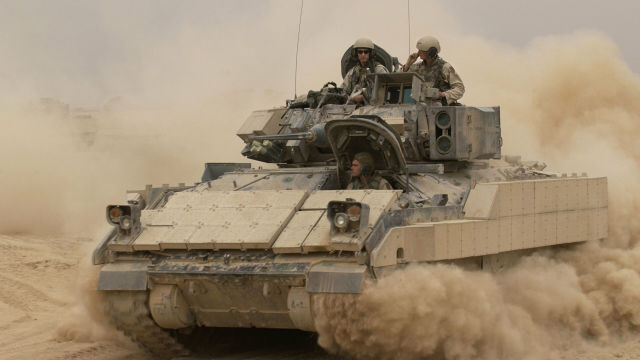The machines that the United States plans to supply to the Armed Forces have weaknesses, said Candidate of Military Sciences Sergey SuvorovMOSCOW, January 13.
/tass/. Bradley infantry fighting vehicles (IFVs), which the United States plans to supply to the Armed Forces of Ukraine (AFU), have weak points and lack cross-country capability for the terrain on which the fighting is unfolding today. This opinion was expressed by the colonel of the reserve, an expert in the field of armored vehicles, candidate of military Sciences Sergey Suvorov.
In early January, the US authorities announced the allocation to Ukraine of another package of military assistance in excess of $ 3 billion, which, in particular, includes Bradley.
"The disadvantages of Bradley are still a large mass, the lack of the ability to overcome water barriers. How it will behave on the soils of Ukraine, on chernozem is, in general, another question, " Suvorov said, noting that the mass of modern modifications of this machine is comparable to the mass of the T-55 tank (had a mass of about 36 tons) and reduces its patency.
The expert stressed that any theater of military operations implies the presence of water obstacles in the way of armored vehicles, and to overcome them, early Bradleys could be equipped with special pontoons. "One of the very first modifications could overcome obstacles with the help of a pontoon. Without additional protection, the easiest. The one that is planned for delivery - with additional protection - will not float with these "floats," he explained. The interlocutor of the agency also pointed out the difficulties associated with the use of pontoons: they had to be delivered to the place of use separately from the car and equipped with BMP immediately before forcing obstacles.
At the same time, Suvorov noted the security of Bradley, its acceptable firepower and the availability of a modern fire control system. And although the car had few opportunities to show itself in combat conditions, in Iraq, where it was still used, these American cars "burned like everyone else," the expert said. "There is one weak point from the experience of the war in Iraq: a hit from a large-caliber machine gun into the frontal part in the area of the on-board gearboxes disabled it," he explained.
According to the manufacturer, the British company BAE Systems, as well as open sources, modern Bradley modifications (A2 ODS, A3, A4) have a mass of 32-36 tons. The vehicle is equipped with an automatic 25 mm cannon capable of firing high-explosive and armor-piercing sub-caliber ammunition, a 7.62 mm machine gun paired with it, as well as a TOW anti-tank missile launcher with two missiles.
The engine and transmission compartment is located in the front of the case. The 600 hp engine (675 in A4 modification) accelerates the BMP to 61 km/h (66 km/h for A4). The power reserve of the car is 400 km.
The A3 variant received a situational awareness system at the level of an armored brigade and can be equipped with a set of additional armor with dynamic protection for urban combat. A4 has improved digital communication capabilities that allow the exchange of information about the tactical situation in real time, and electronic warfare tools have been added.
Pentagon Press Secretary Pat Ryder in an interview with the online edition of The Drive reported that the A2 ODS modification will be transferred to Ukraine. This variant was developed based on the results of the use of an armored vehicle in Operation Desert Storm in Iraq in 1991 and is equipped with a laser rangefinder safe for vision, a satellite navigation system, and an improved driver's view.
The full text of the article about the armored vehicle can be read on the TASS website at 08:00 Moscow time.

